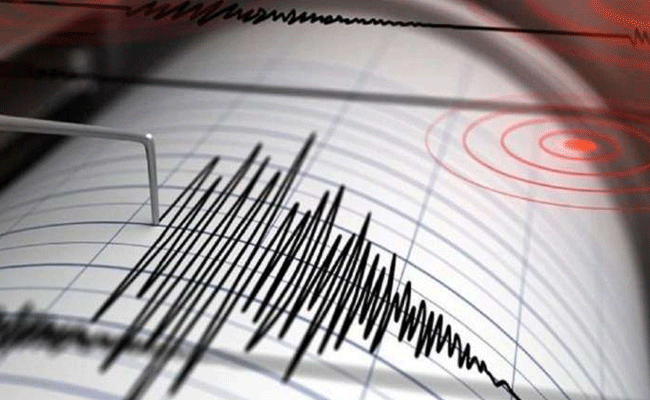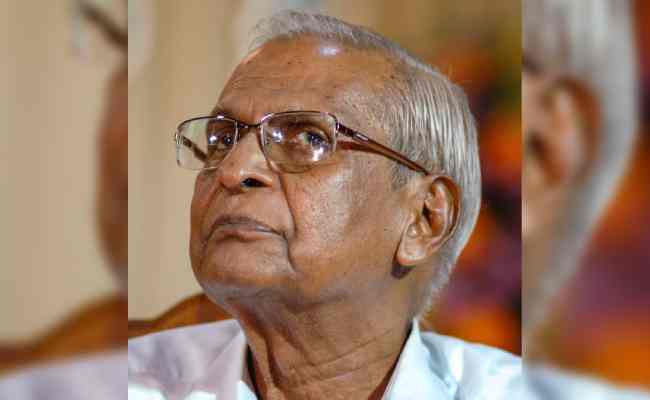Ahmedabad (PTI): Gujarat's Amreli district has been the epicentre of an 'earthquake swarm' as it has recorded nearly 400 mild tremors in the last two years, according to officials.
A swarm is a sequence of mostly small earthquakes which are usually short-lived but can continue for days, weeks, or sometimes even months and often recur at the same location.
Residents of Amreli's Mitiyala village, where many of these 400 tremors were felt, have started sleeping outside their houses as a precautionary measure so that they are not caught unawares in case of any major seismic activity.
Explaining the reason behind the 'earthquake swarm' in Amreli district of Saurashtra region, Gandhinagar-based Institute of Seismological Research's (ISR) officiating Director General Sumer Chopra told PTI that tectonic setup and hydrological loading are the reasons for the seasonal seismic activities.
In the 48 hours from February 23, Amreli's Savarkundla and Khamba talukas recorded four tremors in the intensity range of 3.1 to 3.4, making residents worried.
The seismic activity in Amreli has been witnessed just after the recent devastating earthquake in Turkiye that killed more than 45,000 people.
In January 2001, a massive earthquake in Gujarat's Kutch district killed 13,800 people and another 1.67 lakh were injured. The earthquake had caused severe damage to properties in various towns and villages of the district.
Asked about the recent seismic activity in Amreli, Chopra said this is an "earthquake swarm" event in which small tremors keep on recurring. This is mostly seasonal.
"In the last two years and two months, we recorded 400 mild tremors in Amreli, out of which 86 per cent were below the intensity of 2, while 13 per cent were between the intensity of 2 and 3 and only in five events, it went above 3 magnitude," he said.
"Most of these mild tremors are not even felt by the people. Just our machine records them," he said.
With a caveat that "earthquakes cannot be predicted", Chopra said the possibility of a major earthquake is low when the 'earthquake swarm' is taking place.
"Most of the Saurashtra region including Amreli district falls in seismic zone three, which is categorised as moderate damage risk zone. The main reason is there are no major fault lines in that area," he said.
The fault line in Amreli is of 10 kilometres. For major earthquakes, the fault lines should be of more than 60 to 70 km, the official said.
Explaining the reason behind the 'earthquake swarm' in Amreli, he said the tectonic setup and hydrological loading are the reasons for the seasonal seismic activities.
"There are fractures in the land underneath due to tectonic setup and the hydrological loading during monsoon and sometimes after it causes these mild tremors," he said.
The hydrologic surface loads are based on the mass of water stored as soil moisture, snow, and in vegetation.
"The highest intensity earthquake of 4.4 magnitude was recorded in 1891 in Amreli, which was 130 years ago," Chopra said.
In Saurashtra region, the highest intensity earthquake of 5.1 was recorded at Talala in Junagadh district in 2011, he said.
"Unlike Kutch which has major fault lines, Saurashtra does not have major fault lines," the ISR official said referring to the 7.6 magnitude earthquake that hit Kutch district on January 26, 2001.
Meanwhile, Mitiyala resident Mohammad Rathod said due to the fear of tremors, most of the people in the village including the sarpanch, have started sleeping outside their houses at night.
"After Turkiye and remembering the Kutch earthquake of 2001, we want to take precautions," he said.
Let the Truth be known. If you read VB and like VB, please be a VB Supporter and Help us deliver the Truth to one and all.
Kochi (PTI): Dramatic scenes unfolded at the Ernakulam town hall, where the mortal remains of CPI(M) leader M M Lawrence were kept for public homage, as the late leader's daughter protested the decision to hand over his body to the Government Medical College Hospital here.
The unexpected events occurred after Asha moved the Kerala High Court, challenging the decision of her siblings to donate their father's body to the medical college for educational purposes.
The High Court, after considering the plea, directed the Kalamassery Medical College authorities to hear the objections and take a decision in accordance with the Kerala Anatomy Act.
The court also instructed the college to preserve the body for the time being at the mortuary.
In her petition, the daughter claimed that her father had been baptized and that all his children were baptized in the church.
She further alleged that her siblings along with the Communist party were attempting to project him as an atheist.
Two of Lawrence's children had previously given their consent to handing over the body to the medical college.
Lawrence died on September 21 at the age of 95.
Meanwhile, the ruling CPI(M) clarified that it has no role in the matter.
Whether to hand over the body to the medical college or bury it in a church is a decision for the family, the party said.
CPI(M) district secretary K A Salim said that the decision to hand over the body to the medical college was made by his son.
The court's decision came as the Medical College authorities reached the town hall to take possession of the body.
Asha, the complainant in the case, protested as the body was being handed over to the Medical College authorities amidst chanting of slogans by CPI(M) workers who had gathered to pay their last respects to the departed leader.
Lawrence's son said he decided to hand over the body for medical studies as per his father's last wish.





